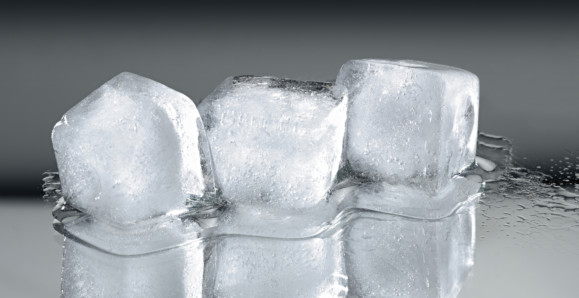
Patients suffering from pagophagia compulsively crave and chomp on ice, even scraping buildup off freezer walls for a fix. The disorder appears to be caused by an iron deficiency, and supplements of the mineral tend to ease the cravings. But what is it about ice that makes it so irresistible? A new study proposes that, like a strong cup of coffee, ice may give those with insufficient iron a much-needed mental boost. Fatigue is the most common symptom of iron-deficiency anaemia, which occurs when the body can’t produce enough oxygen-carrying haemoglobin because of low iron.
“I had a friend who was suffering from iron-deficiency anaemia who was just crunching through massive amounts of ice a day,” said study author Melissa Hunt, a clinical psychologist at the University of Pennsylvania. “She said: ‘It’s like a cup of coffee. I don’t feel awake until I have a cup of ice in my hand.’ “
Hunt and her colleagues had both anaemic and healthy subjects complete a standardised, 22-minute attention test commonly used to diagnose attention deficit hyperactivity disorder. Just before the test, participants were given either a cup of ice or lukewarm water to consume.
Iron-deficient subjects who had sipped on water performed far more sluggishly on the test than controls, as expected. But those who ate ice beforehand did just as well as their healthy counterparts. For healthy subjects, having a cup of ice instead of water appeared to make no difference in test performance.
“It’s not like craving a dessert. It’s more like needing a cup of coffee,” Hunt said.
The study was published in the October issue of the journal “Medical Hypotheses”.
Pagophagia is one of many types of pica, a disorder that encompasses daily craving and eating of unusual nonfoods such as clay, chalk, paste, cigarette butts or laundry starch. Patients with pica may also ingest atypical foods compulsively, such as lemons, tofu or dried pasta.
About 20 per cent of cases are pregnant women, since their iron stores can easily get depleted while serving both them and their growing fetuses.
For centuries, doctors have taken note of pica in many forms. The first might have been the ancient Greek physician Hippocrates of Kos, who in the 5th century BC wrote about pregnant women’s “desire to eat earth or charcoal”. A Byzantine obstetric textbook from the 6th century AD describes patients craving spicy or salty dishes, but also dirt, eggshells and ashes.
But pica largely remains a medical mystery. Certainly its association with low iron is real, although oddly, pica appears in only about half of iron-deficient patients.
“A general hypothesis of pica is that oftentimes, it is an attempt to supplement the diet with basic minerals — think iron or copper,” Hunt said. “That might explain things such as dirt consumption, but it absolutely does not explain pagophagia.”
Hunt points to a phenomenon called the mammalian diving reflex as a possible reason the ice-chewing caused better test performance. When submerged in water, most air-breathing vertebrates slow down their heart rate and constrict blood vessels in their arms and legs. This decreases the oxygen supply to the body’s periphery, saving it for vital organs.
“If you think about whales and dolphins diving, the water gets colder and their peripheral blood vessels constrict and shunt all the blood to the internal organs and the brain,” she said. “It is sort of vestigial, but humans do show the dive reflex.”
Crucially, the reflex is triggered by the face having contact with cold water, but not warm water. So perhaps the chill of chewing on ice cubes may lead to an increase of oxygenated blood to the brain, providing the cognitive boost that anaemic patients need.
For those with enough iron, Hunt speculates, there would be no additional benefit to more blood flow.
Catherine Broome, a haematologist with the Georgetown University School of Medicine, said she often sees pagophagia in her iron-deficient patients. She even uses the intensity of the disorder to help track whether treatment is working.
“As we replace a patient’s iron, the desire to chew ice will lessen, so it’s an easy symptom to follow in patients,” said Broome, who found the study fascinating and the conclusion quite feasible.
Although patients will admit to having pica if asked, typically they don’t volunteer the information readily.
“Patients tend to be somewhat secretive about these kinds of behaviours. You have to tease it out,” said Michael Bromberg, a Temple University haematologist.
Bromberg remarked on some issues with the study’s details, such as omitting haemoglobin data for the anaemic patients and equating iron deficiency with anaemia. Having an iron deficiency can progress to anaemia, but the two terms aren’t synonymous.
Both haematologists had never heard any of their patients say that ice makes them feel more alert. Instead, eating ice has been described more as an uncontrollable craving than a jolt of energy.
“Patients try not to eat ice,” Broome said. “But like being addicted to a drug, even if you don’t want to do it, you have to.”
–Washington Post











